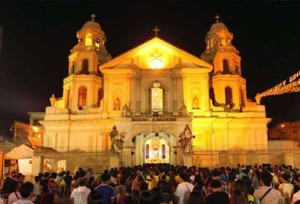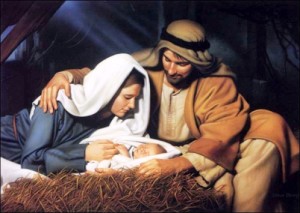Have you found out how much fun it is celebrating Christmas in my country? It’s more than just the well-lit shopping malls and the yuletide spirit all around; it’s because of our traditional Christmas dawn mass!


Simbang Gabi or dawn masses is a series of masses held only in the Philippines from December 16 to December 24. It is a novena dawn mass as part of the Filipinos’ yearly Christmas season celebration. The Roman Catholics and the Aglipayans in the Philippines attend the devotional Masses at the wee hours of the morning usually from three to five o’clock in the morning not only in anticipation of Christmas but also to honor the Blessed Virgin Mary. The culmination of the novena mass is on the 25th of December. Catholics go to midnight mass on the eve of Christmas to celebrate the birth of Jesus Christ. The mass includes the ceremony of the Baby Jesus being placed in the manger.
The Simbang Gabi in the Philippines started in the early part of the Spanish occupation of the Southeast Asian nation as a practice for farmers before sunrise to avoid the scorching heat of the sun while working in the agricultural lands. Masses were celebrated early morning instead in the evenings which was common to Hispanic nations. Before on Christmas season, novenas were first held in the evenings and the devotees attended the evening masses in spite of being fatigued from work. As a compromise, the clergy decided to hold masses at early dawn just before the Filipino natives go out to toil the lands, eventually spreading the practice as a Philippine custom during the Christmas season.
The Christmas Dawn Mass or Simbang Gabi continued through the years up to the present time, eventually being a distinct part of the Philippine culture. In fact, the Catholic Church has allowed “anticipated mass” so that call center agents, nurses, doctors, and working professionals on night duties can also attend Christmas Dawn Mass before they start their shift.
The Simbang Gabi not only ends after the mass. Outside the churches are numerous stalls where different local delicacies are sold. People who have just attended Simbang Gabi can select from different mouth-watering rice pastries, biscuits, sweets, and hot beverages either to bring these foods as “pasalubong” or take-home gifts for relatives or eat them for breakfast.
The most popular foods as they are popularly known are puto bumbong, bibingka, suman which are usually cooked on the spot. These rice pastries can be paired with a “Kapeng Barako”, which is a very strong coffee that originated from the province of Batangas, hot chocolate, and salabat which is a tisane of ginger. Other foods that are available outside or near the churches are arroz caldo (rice and chicken porridge) and papaitan or a goat bile stew.
The rice-based foods were the originally sold foods after Simbang Gabi since they provide the needed energy for farmers after attending the Midnight Mass to work efficiently in the rice paddies where work can be backbreaking. These kind of foods are also cheap while being very tasty that is why they are popular to the farmers.
Only in the Philippines, the popular tradition of the Simbang Gabi remains as popular and has been one of the most attended yearly practice of the Filipinos. There even has been a belief that completing the 9-day dawn masses would allow you to wish for something from God and God will grant your wish.